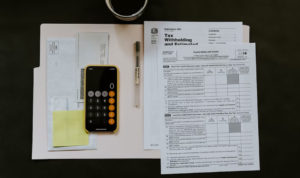If you loathe bookkeeping, you’re not alone. Many business owners dread this very necessary task, and it can be hard to learn if you’re unfamiliar with accounting — so here’s your guide.
Bookkeeping is the foundation for all small business insight. If you’re running a small business, you’ve got to make it habitual. All too often, bookkeeping is put aside by small business owners to tackle the most pressing matter of the moment. If it’s not that, it’s procrastination or number phobia (the fear of getting it wrong).
Trust me, don’t put it aside. Far too many small business owners often allow a backlog of transactions and expenses to build up before organizing them, which can hurt your business in at least two significant ways.
First, it creates confusion. Up-to-date bookkeeping tells you the critical things you need to know. Without it, you’ll only have a rough idea of how much money you have, which outstanding bills you need to pay and whether you have been paid for the goods or services you provide.
Second, ignoring bookkeeping makes paying your taxes more complicated. There are few things worse than being on a deadline and having to sort through a paper bag full of receipts for items you can deduct — at the same time you’re trying to meet a deadline for a client. Using a tax accountant or preparer isn’t cheap, either.
Here’s the good news: You don’t need a finance degree to understand and benefit from bookkeeping. The double-entry bookkeeping method, the way accounting is done today, dates back to the 15th century. If you’ve ever made a checklist of items needed to complete a task and then marked the items off as they were gathered or accomplished, you’ve got the gist of bookkeeping.
Related: Finding the Right Solution for Your Bookkeeping Needs
Bookkeeping 101
When you’re ready to undertake your own bookkeeping, here’s the syllabus for your non-degree course:
- Accounts. Accounts group similar business activities for ease of analysis (i.e. a sales account). The complete list of your accounts is called your chart of accounts. Items on this list include sales, cost of goods sold, salaries — all of the business activities you do.
- Accounting period: This is the specific stretch of time over which you’re looking at your business. For instance, you may want to know how you did in February. Or the third quarter. Or the year. Or since you’ve started advertising.
- Accounts payable: This is money you currently owe vendors or suppliers but haven’t yet paid. If you’ve bought a computer that you haven’t yet paid for, that’s an account payable.
- Accounts receivable: You’ve done the work and sent the bill, but the client’s check is in the mail. That’s an account receivable.
- Accruals: Expenses or revenue you’ve incurred but haven’t paid yet (this means accounts payable and accounts receivable are accruals). If you’re using accrual-based accounting, you record accruals (both positive and negative) at the time of the sale. In cash-based accounting, you would have recorded when you paid or received the money. The benefit of accrual-based accounting is that it lets you know that while you may have cash on hand, you shouldn’t spend it freely. You might owe for that shipment of raw materials you just received. Conversely, you may have worked all month for one client but haven’t yet been paid for that work.
- Assets: Things you own, physical or intangible. These might be items such as property, vehicles, cash, a computer, or the right to use a particular parking space.
- Balance sheet: This document summarizes all your assets (what you own) and compares them to all of your equity and all of your liabilities (what you owe). With it, you can assess the overall financial health of your organization.
- Cash flow: A comparison of the money you usually receive against the money you need to pay.
- Cost of goods sold (COGS): If you make a product, the sum of the costs is directly related to making that product. So, if you’re a bakery, these would be materials such as flour, sugar, and eggs, as well as the cost of using the kitchen in which you bake. After you subtract your cost of goods sold from your net sales (that’s your total sales revenues fewer sales discounts, allowances or returns), you get your gross profit.
- Double-entry bookkeeping: By recording each entry as credit and debit, you see the source of your money and where you’re spending it. This makes it easier to catch errors. Credit cash when you buy an asset; debit an asset account (for instance, “computer expense”) when you spend money for that asset. When you check everything, it’s called creating a trial balance, which is just a way of telling you whether your debits and credits are accurate. If your debits and credits don’t match, someone must go through each item until you find the source of the error. While laborious, catching these discrepancies is the real benefit of double-entry bookkeeping.
- Equity: The value of your business after you’ve paid back your liabilities and who owns it (that equity might be all yours or shared with a partner or investors).
- Expenses: What you spend to keep your business running. Your expenses might be items you need to make a product you sell. These might include the cost of renting your building, your office supplies, your payroll and the like.
- General ledger: This traditionally lists all the individual accounts needed to delineate the assets, liabilities, equity, revenue, expense, gain and loss transactions of your business. Rather than exhaustively list every transaction (say, the wire you bought weekly starting in January), it summarizes from the chronological listings in journals, such as a raw inventory journal or a sales receipts journal.
- Income statement (profit-and-loss statement): This document compares revenue to your expenditures to reveal whether your business made or lost money in a given accounting period.
- Liabilities: Money you owe but haven’t paid, such as outstanding invoices, credit card balances, and any business loans you’ve taken out. If your business’s liabilities total more than its assets, your business is in trouble.
- Payroll: The complete list of your employees and how much each is paid, as well as how much you pay in tax and retirement contributions.
Related: Five Bookkeeping Tips for Business Owners
Bookkeeping 102
The next non-MBA skill you need to learn is diligent and accurate recordkeeping. Spoiler alert: A box full of unorganized receipts and related financial papers that you don’t look at until minutes before tax time is neither efficient nor recordkeeping.
Watch for other systems that seem as if they should work, but are flawed. For instance, keeping your journals in notebooks or file folders — no matter how easily accessible — can be tedious and might lead to errors. Likewise, spreadsheets seem compact, they’re flexible and most people have a basic understanding of them. Still, they lend themselves easily to error and can quickly become complex.
Here’s what really works in mastering your bookkeeping: an online platform into which your data can be quickly scanned and one that systematically links with your bank accounts and credit cards.
Such a platform is easy to set up and can automatically perform most of the tasks that best help you. There are several platforms like this (such as Neat and QuickBooks) that feature the ability to categorize your expenditures and income into standard accounts to help you quickly understand your business finances and where opportunities exist to improve.
So go ahead and toss your cap into the air. In just these few minutes of reading this article, you’ve mastered the essence of bookkeeping without an accounting degree. Now go forth and be profitable.




